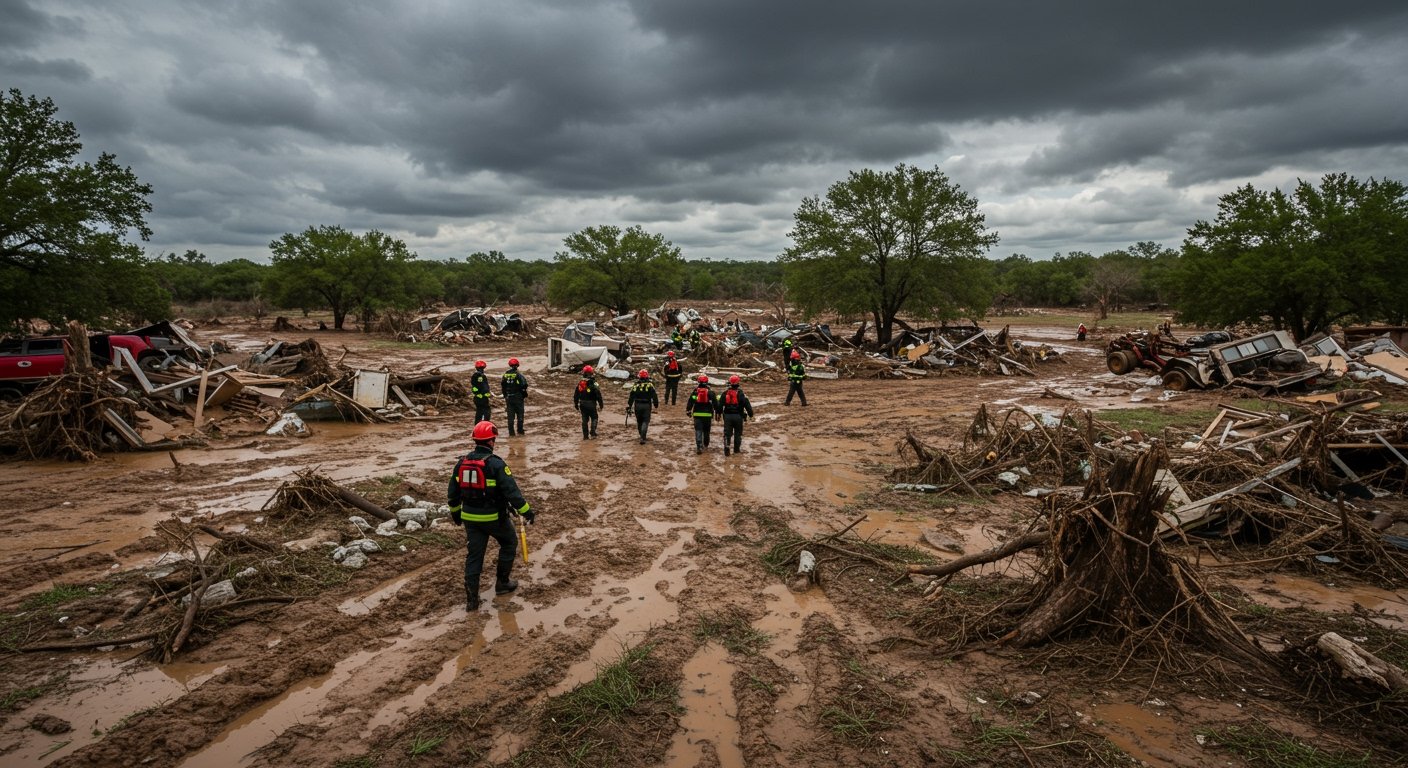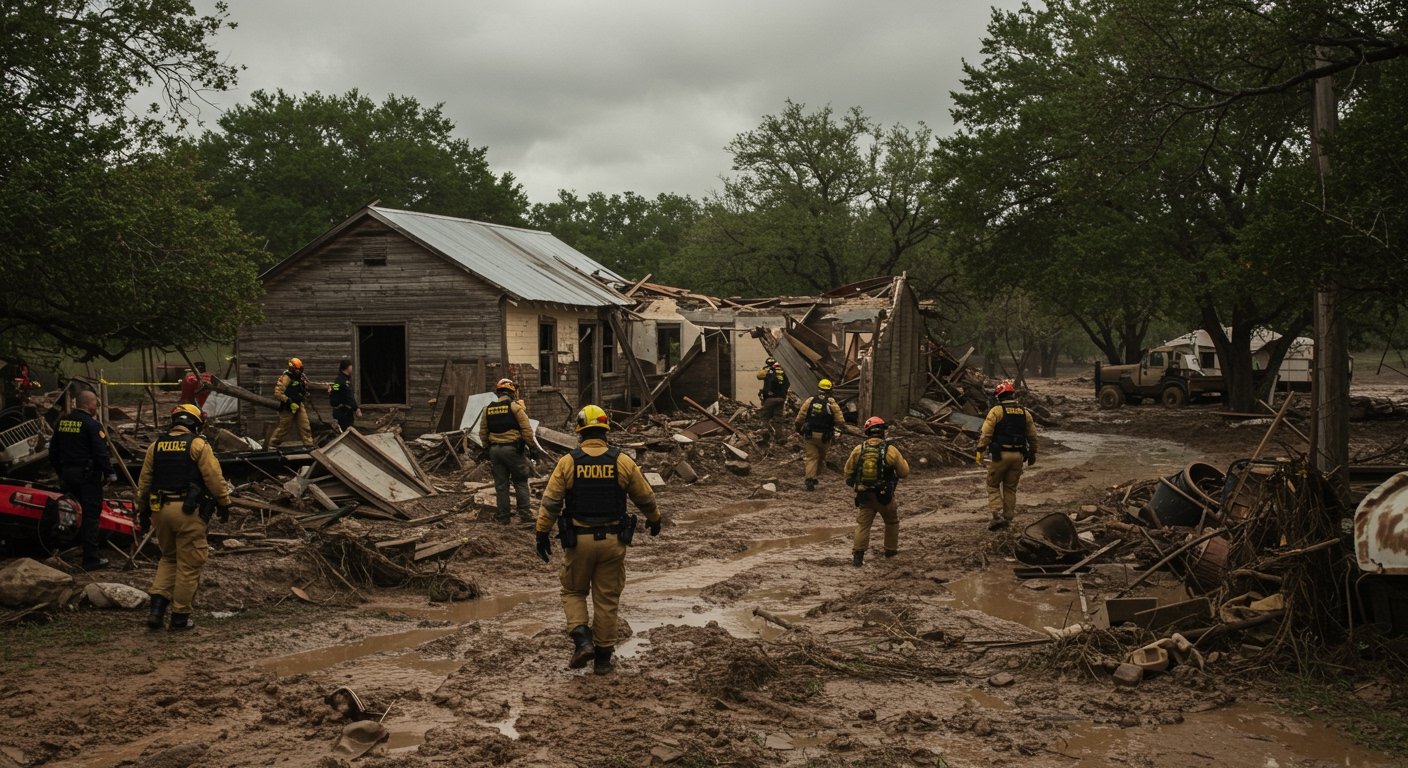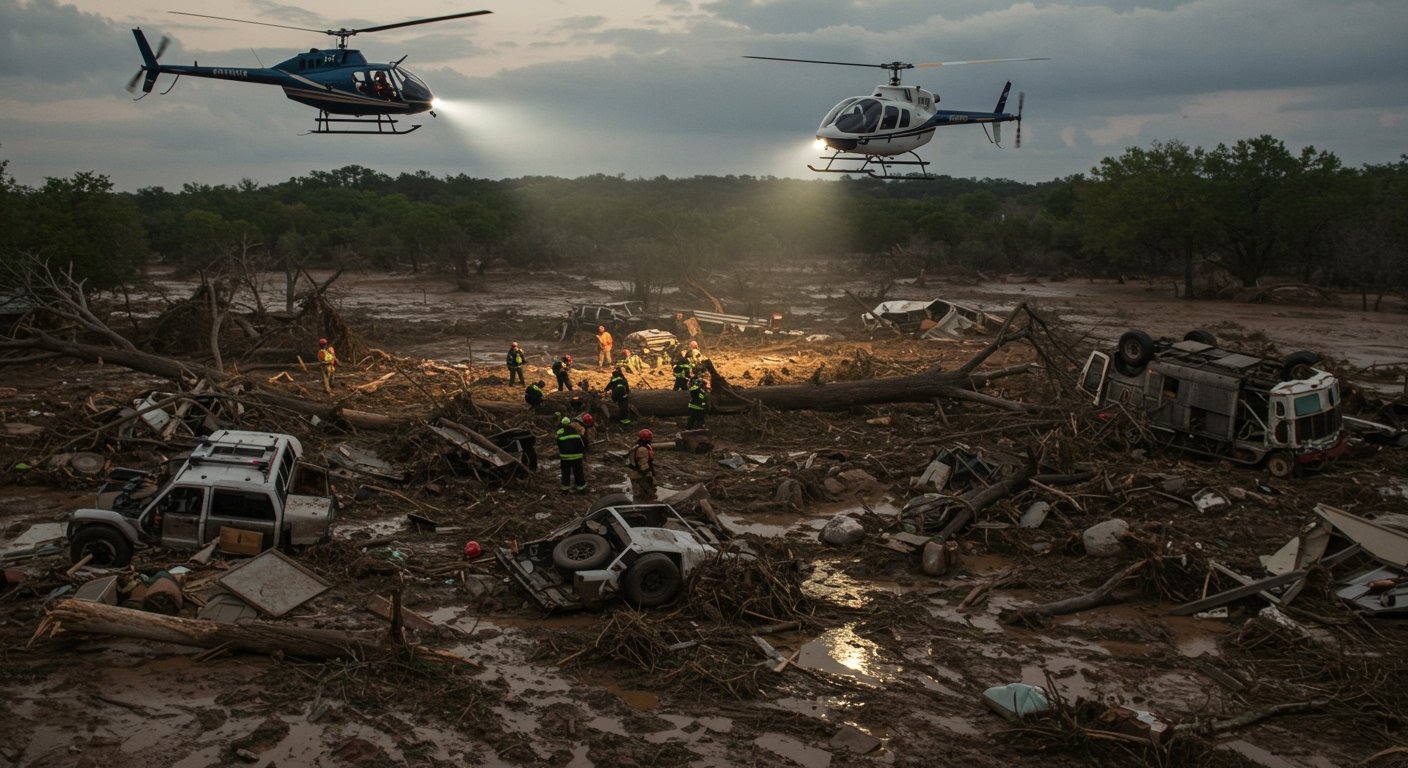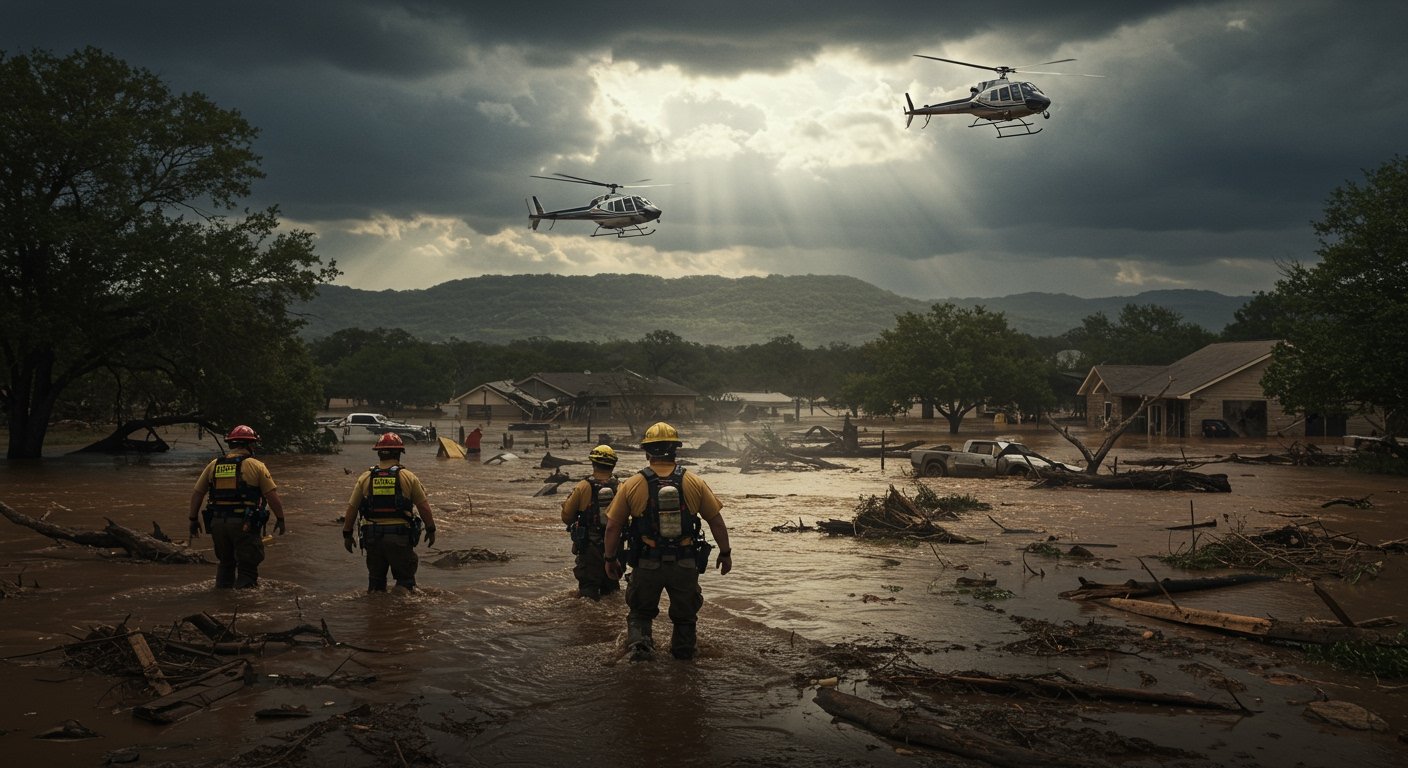CENTRAL TEXAS – Catastrophic flash floods that struck Central Texas beginning Friday have resulted in a devastating loss of life, with the death toll climbing to 70 by Sunday. Search-and-rescue operations are ongoing in the hardest-hit areas, focusing efforts on locating 11 campers and a camp counselor who remain missing.
The intense and rapid flooding transformed scenic riverbanks into torrents, causing widespread destruction and catching many residents and visitors by surprise, despite severe weather warnings.
Scale of the Tragedy
The sheer scale of the human toll became starkly clear over the weekend as rescue crews navigated treacherous debris fields. Kerr County, situated along the Guadalupe River, bore the brunt of the disaster, accounting for the majority of confirmed fatalities. Authorities there have reported 59 deaths, a figure that includes 38 adults and a heartbreaking 21 children.
Additional fatalities were confirmed in neighboring counties affected by the severe weather, including Travis, Burnet, and Kendall counties, underscoring the broad geographic impact of the floodwaters across the region.
The Search for the Missing
A primary focus of the ongoing search efforts is locating the 11 children and the single camp counselor who were camping along the banks of the Guadalupe River when the floodwaters surged. Their disappearance is a focal point of concern for rescue teams and the affected communities as hopes dim with each passing hour.
Search teams, composed of local and state agencies, are methodically scouring the extensive debris left behind by the flood, facing challenging conditions including tangled wreckage of homes, vehicles, broken trees, and other debris that complicates access to affected areas.
A River’s Fury
The catalyst for the disaster was an unprecedented and rapid rise in the Guadalupe River. Before daybreak on Friday, the river experienced a stunning 26-foot surge in just 45 minutes. This sudden and massive influx of water obliterated everything in its path, destroying homes, sweeping away vehicles, and redrawing the landscape along the river corridor.
The speed and intensity of the water’s rise left little time for escape for those caught directly in the path of the flood, particularly those camping or residing in low-lying areas adjacent to the river.
Rescue Operations Under Duress
In the immediate aftermath of the flash floods, emergency responders launched a massive rescue operation. In the first 36 hours alone, over 850 people were successfully rescued from flooded homes, vehicles, and precarious locations. These rescues were conducted using a variety of methods, including helicopters, boats, and drones, highlighting the challenging nature of accessing stranded individuals in inundated and damaged areas.
Rescue crews described navigating through scenes of utter devastation, with roads impassable and the landscape cluttered with the detritus of destroyed lives. The physical environment itself became a hazard, requiring careful movement through unstable ground and floating or submerged debris.
Context and Warnings
Central Texas is situated within a geographical area colloquially known as “flash flood alley,” a region prone to sudden and severe flooding due to its topography and meteorological patterns. The National Weather Service had issued warnings ahead of the rainfall, including rare “flash flood emergencies” on Friday, signaling an exceptionally dangerous and life-threatening situation.
Despite these urgent warnings, the extreme intensity of the downpour and the unprecedented speed of the river’s rise caught many unaware or overwhelmed existing flood preparedness measures.
The Situation on Sunday
As of Sunday, the region was still grappling with the aftermath and facing continued risks. Flash flood watches remained active across parts of Central Texas, with forecasts indicating the potential for continued rainfall. This ongoing weather threat complicated rescue and recovery efforts, raising concerns about further flooding in already saturated areas.
The focus remains on the search for the 12 missing individuals while authorities and aid organizations begin to assess the full scope of the damage and plan for the long process of recovery and rebuilding in the affected communities.






